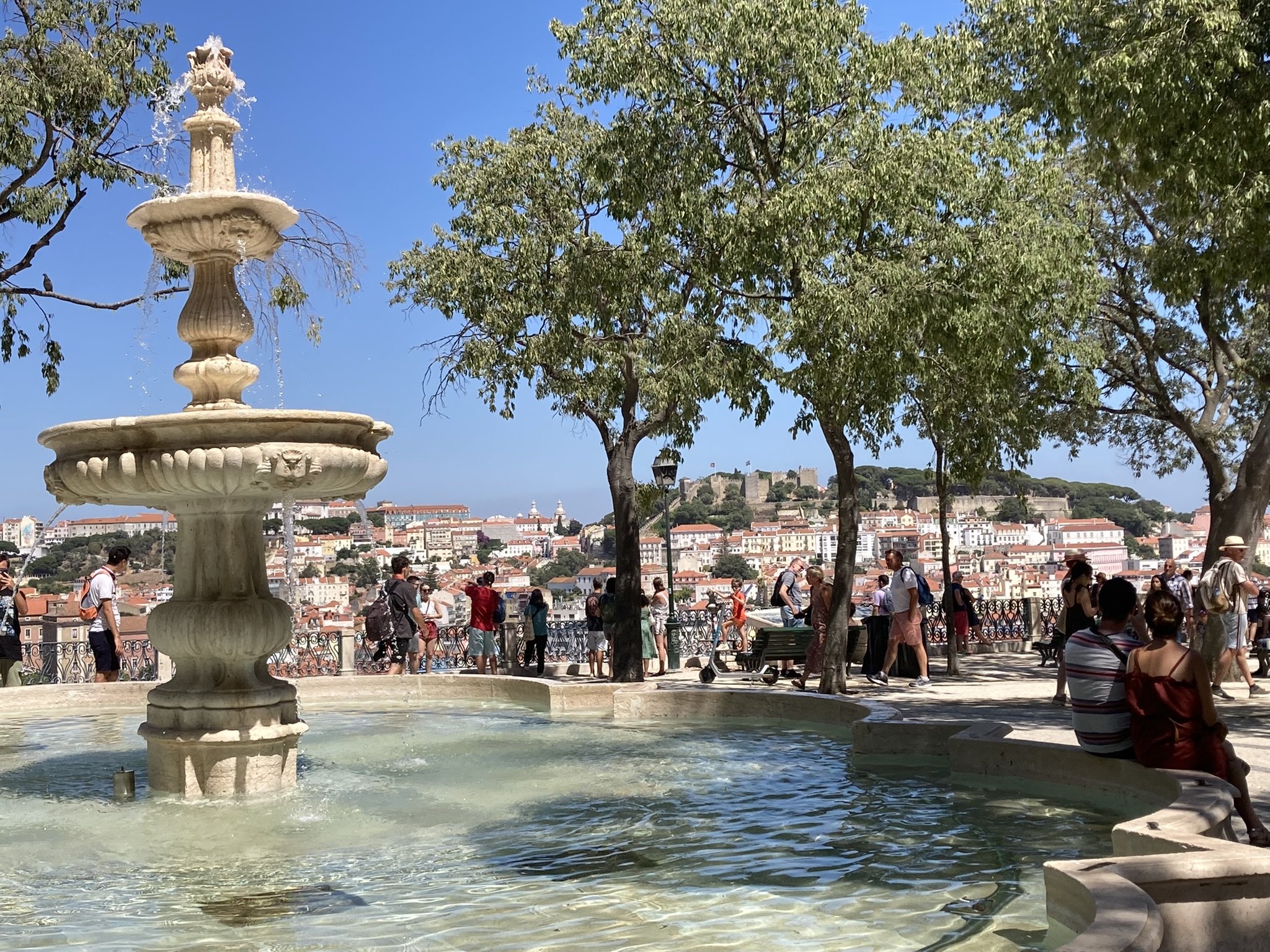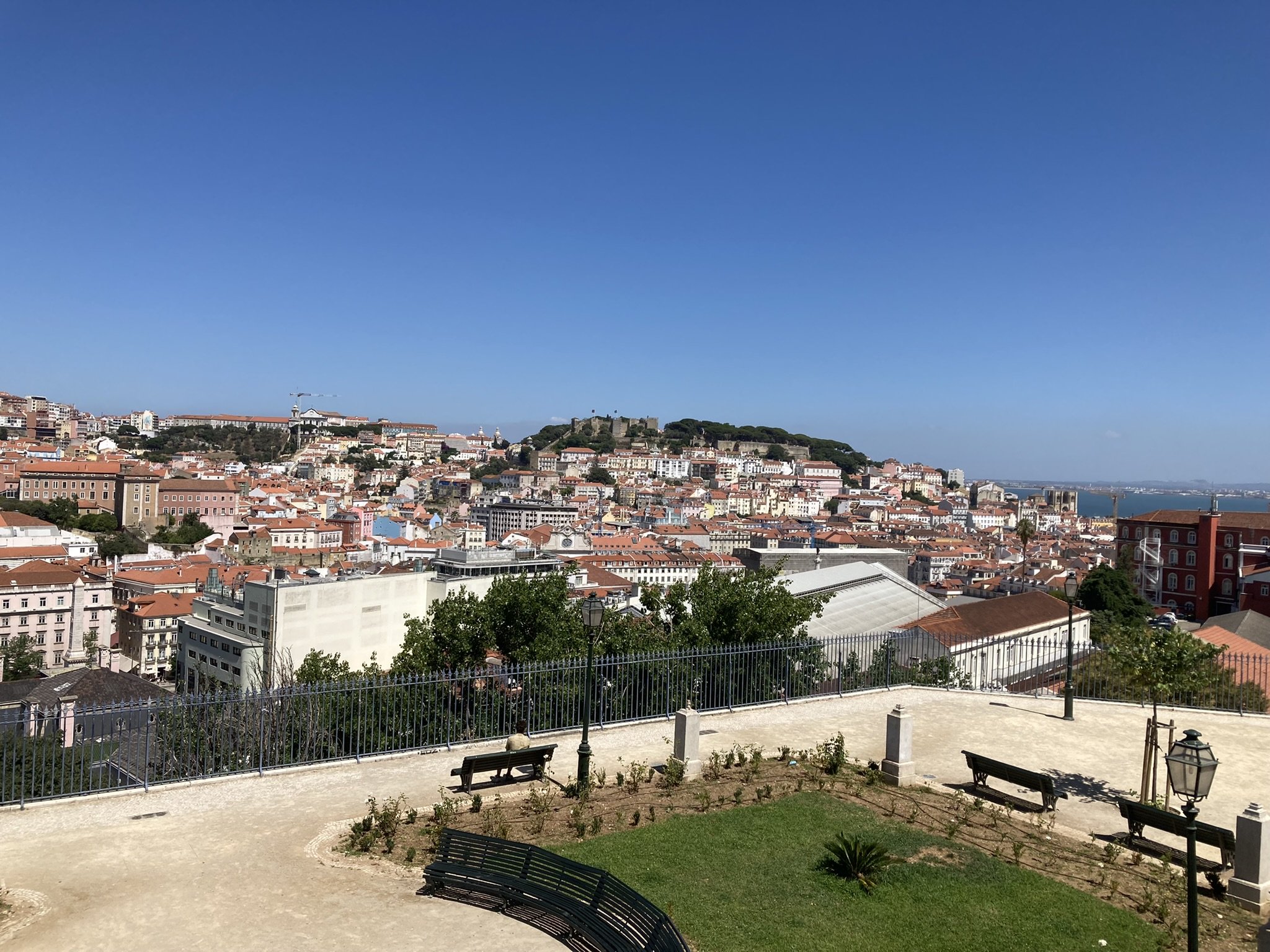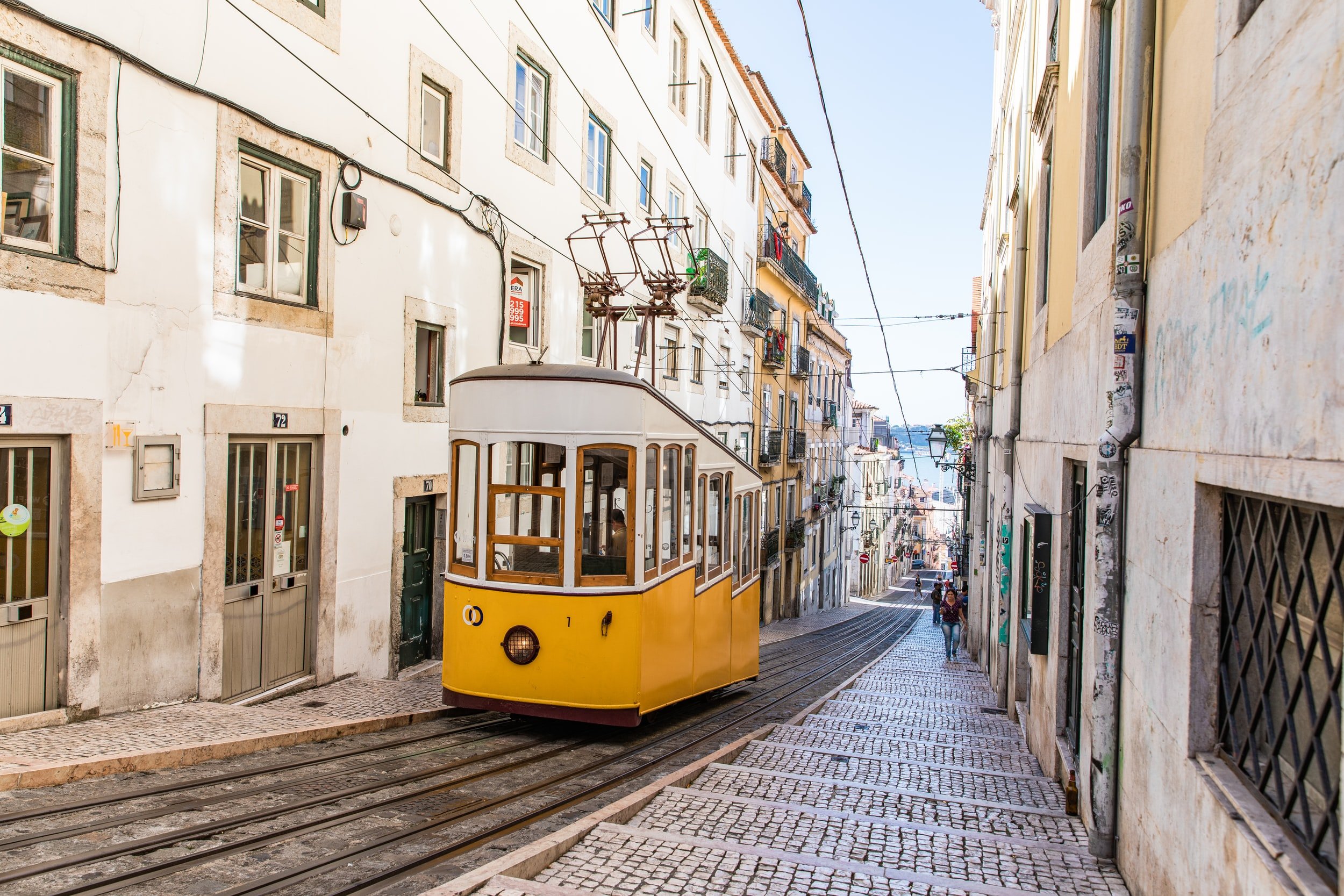The Seven Hills of Lisbon
Lisbon, city of artists and poets. City of tiles and mosaics. City of steep hills and yellow trams. I’ve traded hot, sweaty Bali for hot, burning Lisbon. A little closer to home, but still far away to be unfamiliar and exciting. While I’ve lived in Europe all my life, I’ve never been to any of the southern countries. I figured it was high time to amend that and spend a month in Lisbon, Portugal.
One of the many steep streets in Lisbon. You never know what great views are behind the corner.
The Seven Hills of Lisbon
I come from the upper northern part of Belgium. The Netherlands is just a short bike ride away from me. If there is one thing that characterizes the land I come from, then it is its flatness. Endless flat open roads before. The hills you see here are bridges crossing highways, railroads, and rivers. My legs don’t know what hills are, and they certainly aren’t capable of climbing them.
Lisbon is very much the opposite of that. Just going to the grocery store a few streets over is quite the workout. Nothing is flat here, except for a small strip of land parallel to the river. I’ve come intimately familiar with the seven hills of Lisbon. São Jorge – São Roque – São Vincente – Santo André – Santa Catarina – Sant’Ana – Chagas.
Up and down and up and down again these streets go. I curse these cobblestone hills as my legs ache and my lungs burn. I keep my head down as I climb – while beautiful, these mosaics on the sidewalk are slippery as hell – and I don’t want to see how much farther I still have to go. It’s always still too far. Instead, I swing my head sideways and admire the tiles and colorful facades of these old Lisbon homes. I push on – just one more step, almost there – until there is no more step and the street flattens out. I turn around and gaze down at the steep hill I just climbed. Magnificent. The beauty of this city makes it all worth up, even though I feel my legs shaking and I know I’ll be sore tomorrow. Yet each day I climb these hills and each day they knock the wind out of me. Sometimes I think each day is a little easier, too, but that’s just wishful thinking. These hills are unforgiven, but I forgive them anyway.
São Jorge
As the name implies, this is the hill that houses the great Castelo de São Jorge. The castle has been a National Monument ever since 1910. It’s no wonder they built the castle at the top of this hill; it’s second to none when it comes to natural conditions of defense and surveillance. While not being the highest hill in Lisbon, that claim goes to the often forgotten hill of Garça, the hill of São Jorge peaks high above the rest of the city. Many claim the castle has the best view of the city, and I’m not one to deny that.
What else is there to see on this hill? Well, there’s a surprising amount of peacocks on this hill, and you’ll find much more history than just St. George’s castle. On the south slope, you’ll find the Lisbon Cathedral and the Church of Santo António of Lisbon. Both face the Tagus River and give you an excellent viewpoint over the city and the river. Miradouro das Portas do Sol, aptly named “gates of the sun”, is forever bathed in sunlight and a well-loved place to watch the sunset. Just remember to bring sunscreen.
São Roque
Viewpoint São Pedro de Alcântara marks the top of this hill. São Roque is located in the central part of Lisbon as it holds the districts Bairro Alto and Principe Real. Must-see things on this hill are the Church of São Roque at Square Trindade Coelho and the São Pedro de Alcântara viewpoint. The São Pedro de Alcântara viewpoint is located in the Jardim de São Pedro de Alcântara, a lovely square with beautiful mosaics and big trees, and with views of the above mentioned Castelo de São Jorge.
São Vincente
The hill of São Vincente is not known for its breathtaking viewpoints, but nonetheless worth a visit. Why? Because it is home to the most romantic terraces in the city: Miradouro de Santa Luzia. Miradouro de Santa Luzia offers a view over the historic district Alfama and the Tagus River. Another must-do activity on this hill is visiting the Feira da Ladra, a local flea market that flows down on this hill every Tuesday and Saturday. The best news? You don’t even have to walk here. The historic 28E tram takes you right up the hill.
Historic yellow 28E tram
Santo André
The hill of Santo André corresponds with Miradouro da Garça, the Garça district. The hill has two viewpoints: Sophia de Mello Breyner Andresen and Nossa Senhora do Monte. Sophia de Mello Breyner Andresen is named so after the poet who died in 2004 and spent a lot of time looking over Lisbon from there. You’ll also find the Convent of Graça nearby here. At viewpoint Nossa Senhora do Monte you’ll find the Chapel of Our Lady of the Mountain.
Santa Catarina
The hill of Santa Catarina is located further west of Lisbon, in the district of Cais Do Sodré and Chiado. Among locals, this hill is also known as Adamastor, the mythical sea monster of Os Lusiadas by Luis Vaz de Camões. Because this hill is located on the west side of Lisbon, it offers some spectacular sunsets and a good view of the 25 de Abril bridge (not to be confused with the Golden Gate Bridge, although there is some resemblance).
25 de Abril bridge
Sant’Ana
Sant’Ana Hill is the least known area of Lisbon. On top of the hill you’ll find Jardim do Torel, a park that is still relatively unknown to tourists and therefore not so crowded.
Chagas
If you want a view of the Elevador de Santa Justa, you’ll need to climb Chagas hill. The viewpoint is at the Terraços do Carmo and offers a view of both the Santa Justa’s lift, Rossio Square, the ruins of Convento do Carmo, and some of Lisbon’s finest rooftops. Don’t want to climb the hill? You can also take the Santa Justa’s Lift to the top of the hill and walk the rest of the way on semi-flat streets.
Elevador de Santa Justa






